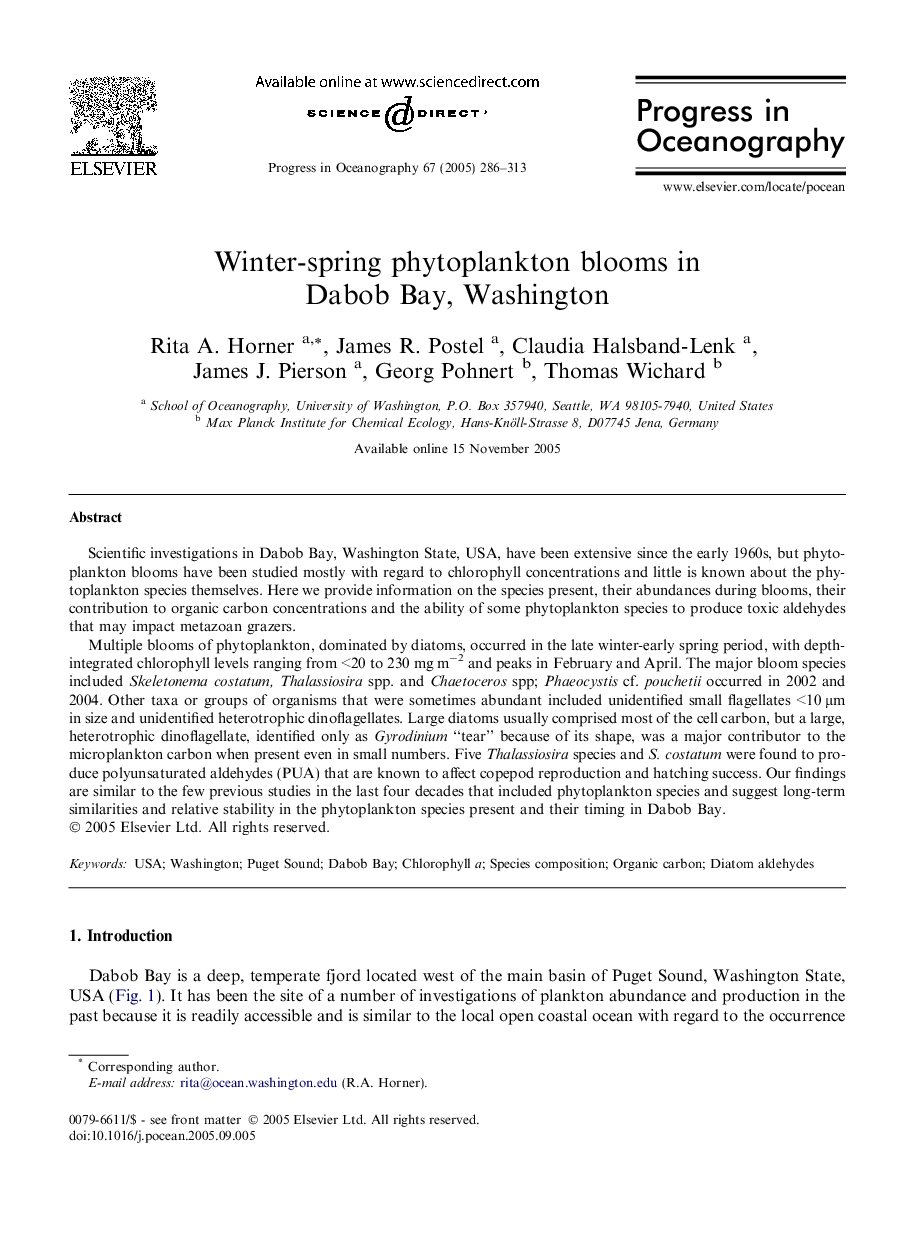| Article ID | Journal | Published Year | Pages | File Type |
|---|---|---|---|---|
| 9485153 | Progress in Oceanography | 2005 | 28 Pages |
Abstract
Multiple blooms of phytoplankton, dominated by diatoms, occurred in the late winter-early spring period, with depth-integrated chlorophyll levels ranging from <20 to 230 mg mâ2 and peaks in February and April. The major bloom species included Skeletonema costatum, Thalassiosira spp. and Chaetoceros spp; Phaeocystis cf. pouchetii occurred in 2002 and 2004. Other taxa or groups of organisms that were sometimes abundant included unidentified small flagellates <10 μm in size and unidentified heterotrophic dinoflagellates. Large diatoms usually comprised most of the cell carbon, but a large, heterotrophic dinoflagellate, identified only as Gyrodinium “tear” because of its shape, was a major contributor to the microplankton carbon when present even in small numbers. Five Thalassiosira species and S. costatum were found to produce polyunsaturated aldehydes (PUA) that are known to affect copepod reproduction and hatching success. Our findings are similar to the few previous studies in the last four decades that included phytoplankton species and suggest long-term similarities and relative stability in the phytoplankton species present and their timing in Dabob Bay.
Related Topics
Physical Sciences and Engineering
Earth and Planetary Sciences
Geology
Authors
Rita A. Horner, James R. Postel, Claudia Halsband-Lenk, James J. Pierson, Georg Pohnert, Thomas Wichard,
